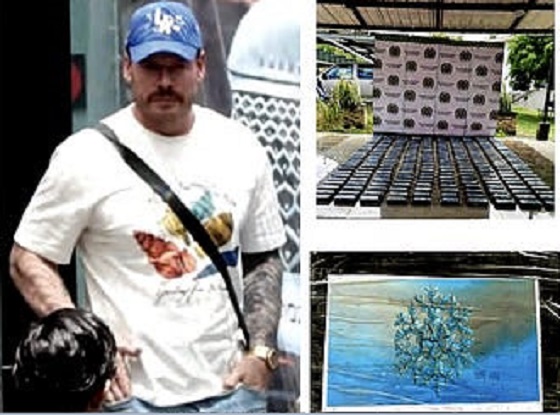Frontier Centre for Public Policy
It’s Time To Stop Church Arsons And What Fuels Them

From the Frontier Centre for Public Policy
By Lee Harding
Religious freedoms and the right to worship have been a recognized hallmark of civilized societies for centuries. The preamble of Canada’s constitution says our country is built on the principles that acknowledge the supremacy of God and the rule of law. In defiance of both, almost 600 Canadian places of worship have suffered arson in recent years. Nothing could be more unCanadian.
The stats were revealed by Member of Parliament Marc Dalton following a formal inquiry to the federal government. The response showed 592 arsons had been set on places of worship between 2010 and 2022. they rose from 58 in 2020 to 90 in 2021, then down to 74 in 2022.
The peak coincides with claims made in May of 2021 that the remains of 215 school children had been discovered on the site of the former Kamloops Residential School.
Although Prime Minister Justin Trudeau called a subsequent wave of church burnings “unacceptable and wrong” he also called their likely motivations “real and fully understandable.” This hardly doused the flames.
These arsons far outnumber those made on Canadian churches in the 1920s by the Ku Klux Klan, which opposed non-Protestants and non-whites. In those years the KKK desecrated Sarnia’s St. Joseph’s Catholic Church. They killed ten people when they set Saint-Boniface College in Winnipeg on fire. They also burned the Cathedral-Basilica of Notre-Dame de Quebec. In 1926, three Klan members were jailed after they blew up St. Mary’s Roman Catholic Church in Barrie, Ont.
The Klan soon fizzled out, seemingly unlike these recent church burnings. The 110-year-old Notre-Dame-des-Sept-Allégresses Catholic church burned down in Trois-Rivières, Quebec last month, but whether arson was involved has not been confirmed.
The presence of bodies underneath the former residential school in Kamloops has not been confirmed either. A 1924 septic field could also account for soil anomalies found there by ground-penetrating radar. Eight million federal tax dollars spent to investigate the site have yielded no remains and details on how the money was spent are sketchy. It’s high time the site was excavated to confirm or rule out the graves and do autopsies on any corpses found there.
Federal funds also fuel the Canadian Anti-Hate Network (CAHN), the Orwellian title for a group that fuels resentment against socially conservative organizations with negative characterizations. On August 7, CAHN published “40 Ways To Fight The Far-Right: Tactics for Community Activists in Canada” thanks to $640,000 from Ottawa.
“White boys and men make up the majority of people involved in hate-promoting movements,” the handbook explains. Pro-life and pro-parent groups, CAHN says, are among those “characterized by racism, antisemitism, Islamophobia, misogyny, anti-2SLGBTQ+ views, and pro-colonialist/ anti-Indigenous bigotry.”
CAHN says the Catholic-dominated, pro-life organization Campaign Life Coalition is a “hate movement.” Liberty Coalition Canada, a legal defence organization, and the activist organization Action4Canada are similarly denigrated for their alleged belief that Canada was founded on Christian values and attempts to reassert such values.
Meanwhile, the CAHN guide advocates “antifascist” doxing, including infiltration of right-leaning organizations. getting people fired, and ending friendships.
Dalton’s Bill C-411 the “Anti-Arson Act” would do more to deter hate-motivated crimes than CAHN ever will. The legislation would punish those who set fires and explosions at religious places. A first offence would get a mandatory five-year jail sentence, while subsequent offenses would prompt seven years.
When respect for the supremacy of God and the rule of law fail, rights give way to wrongs. It’s time to stop the fires and the disputable claims that fuel them, and restore respect for people of faith, their right to worship, and their places of worship.
Lee Harding is a Research Associate for the Frontier Centre for Public Policy.
armed forces
Canada At Risk Of Losing Control Of Its Northern Territories

From the Frontier Centre for Public Policy
By Gerry Bowler
Canada has left the North wide open to foreign powers eager to grow their Arctic foothold
Canada is in danger of losing the Arctic because Ottawa has ignored the North for far too long.
The Canadian North makes up 40 per cent of our land mass and includes more than 19,000 islands in the Arctic Archipelago. Yet only about 120,000 people live across this enormous stretch of wilderness. Canada took control of the region in the late 19th century through territorial transfers from the Hudson’s Bay Company and the British Crown, one of the largest land transfers in history.
For decades afterward, the North received little federal attention. The Second World War briefly changed that, prompting construction of the Alcan Highway to Alaska and bringing new airfields and telephone lines.
The Cold War, along with the threat of Soviet bombers crossing the Pole, led to multiple radar lines. Still, Prime Minister St-Laurent admitted in the 1950s that Canadian governments had treated the North “in an almost continuing state of absence of mind.”
John Diefenbaker’s Progressive Conservative administration tried to reverse that neglect. In 1958, he told a Winnipeg audience: “I see a new Canada—a Canada of the North! … We intend to carry out the legislative program of Arctic research, to develop Arctic routes, to develop those vast hidden resources the last few years have revealed.”
Plans for a research and industrial city in Frobisher Bay, new roads and railway lines and wide-ranging surveys were ambitious but ultimately unaffordable. In the years that followed, both Liberal and Conservative governments again set northern development aside.
Foreign interest, however, continued to grow. The Canadian Security Intelligence Service recently reported Russian and Chinese attempts at influence and subversion in our northern territories.
American governments over the past 20 years have shown serious interest in the region’s resources, which include significant oil, gas and mineral deposits, along with control of the Northwest Passage, a shipping route becoming increasingly accessible as Arctic sea ice recedes.
Canada considers those waters national; the United States, the European Union and at times China argue it is an international strait.
For all practical purposes, Canada has what amounts to no meaningful presence north of the tree line, leaving the field open to countries with far more ambition and far better-equipped forces.
Canada is in no position to defend its claims. We have no icebreakers capable of operating through the Arctic winter. We have no submarines that can work under the ice cap. We have no permanent air base for fighter jets.
And to cover two million square kilometres of Arctic territory, we have only 300 troops stationed there. The chance they could detect, let alone repel, a serious intruder is essentially zero. Without these capabilities, Canada cannot properly monitor activity in the region or enforce its sovereignty claims.
In the last federal budget, Ottawa announced a $1-billion Arctic infrastructure fund for new airports, seaports and all-season roads. Our foreign affairs minister has urged NATO to pay more attention to the Arctic, saying it “must be an organization not only that focuses on the eastern flank, but also that looks north.”
These steps are gestures, not strategy. Canadian governments excel at promises but struggle with procurement, and the idea that European allies might fill the gap, considering their weak response to Russia’s assault on Ukraine, is unlikely.
Our northern territory is under threat. We must use it or lose it.
Gerry Bowler is a Canadian historian and a senior fellow of the Frontier Centre for Public Policy.
Crime
How Global Organized Crime Took Root In Canada
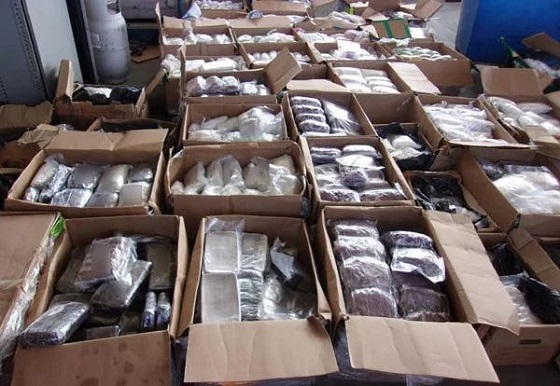
From the Frontier Centre for Public Policy
Weak oversight and fragmented enforcement are enabling criminal networks to undermine Canada’s economy and security, requiring a national-security-level response to dismantle these systems
A massive drug bust reveals how organized crime has turned Canada into a source of illicit narcotics production
Canada is no longer just a victim of the global drug trade—it’s becoming a source. The country’s growing role in narcotics production exposes deep systemic weaknesses in oversight and enforcement that are allowing organized crime to take root and threaten our economy and security.
Police in Edmonton recently seized more than 60,000 opium poppy plants from a northeast property, one of the largest domestic narcotics cultivation operations in Canadian history. It’s part of a growing pattern of domestic production once thought limited to other regions of the world.
This wasn’t a small experiment; it was proof that organized crime now feels confident operating inside Canada.
Transnational crime groups don’t gamble on crops of this scale unless they know their systems are solid. You don’t plant 60,000 poppies without confidence in your logistics, your financing and your buyers. The ability to cultivate, harvest and quietly move that volume of product points to a level of organization that should deeply concern policymakers. An operation like this needs more than a field; it reflects the convergence of agriculture, organized crime and money laundering within Canada’s borders.
The uncomfortable truth is that Canada has become a source country for illicit narcotics rather than merely a consumer or transit point. Fentanyl precursors (the chemical ingredients used to make the synthetic opioid) arrive from abroad, are synthesized domestically and are exported south into the United States. Now, with opium cultivation joining the picture, that same capability is extending to traditional narcotics production.
Criminal networks exploit weak regulatory oversight, land-use gaps and fragmented enforcement, often allowing them to operate in plain sight. These groups are not only producing narcotics but are also embedding themselves within legitimate economic systems.
This isn’t just crime; it’s the slow undermining of Canada’s legitimate economy. Illicit capital flows can distort real estate markets, agricultural valuations and financial transparency. The result is a slow erosion of lawful commerce, replaced by parallel economies that profit from addiction, money laundering and corruption. Those forces don’t just damage national stability—they drive up housing costs, strain health care and undermine trust in Canada’s institutions.
Canada’s enforcement response remains largely reactive, with prosecutions risk-averse and sentencing inadequate as a deterrent. At the same time, threat networks operate with impunity and move seamlessly across the supply chain.
The Edmonton seizure should therefore be read as more than a local success story. It is evidence that criminal enterprise now operates with strategic depth inside Canada. The same confidence that sustains fentanyl synthesis and cocaine importation is now manifesting in agricultural narcotics production. This evolution elevates Canada from passive victim to active threat within the global illicit economy.
Reversing this dynamic requires a fundamental shift in thinking. Organized crime is a matter of national security. That means going beyond raids and arrests toward strategic disruption: tracking illicit finance, dismantling logistical networks that enable these operations and forging robust intelligence partnerships across jurisdictions and agencies.
It’s not about symptoms; it’s about knocking down the systems that sustain this criminal enterprise operating inside Canada.
If we keep seeing narcotics enforcement as a public safety issue instead of a warning of systemic corruption, Canada’s transformation into a threat nation will be complete. Not because of what we import but because of what we now produce.
Scott A. McGregor is a senior fellow with the Frontier Centre for Public Policy and managing partner of Close Hold Intelligence Consulting Ltd.
-
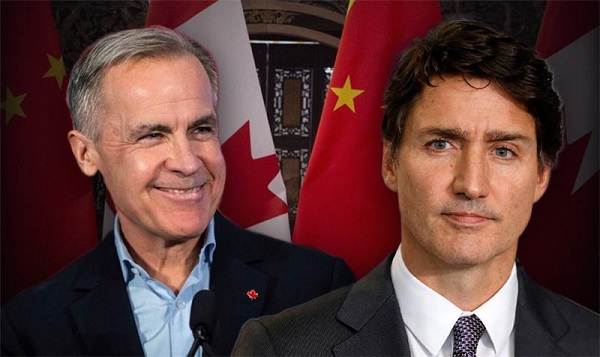
 International2 days ago
International2 days agoBeijing’s blueprint for breaking Canada-U.S. unity
-

 Great Reset1 day ago
Great Reset1 day agoRCMP veterans’ group promotes euthanasia presentation to members
-

 International1 day ago
International1 day agoBoris Johnson Urges Ukraine to Continue War
-

 MAiD1 day ago
MAiD1 day agoHealth Canada suggests MAiD expansion by pre-approving ‘advance requests’
-
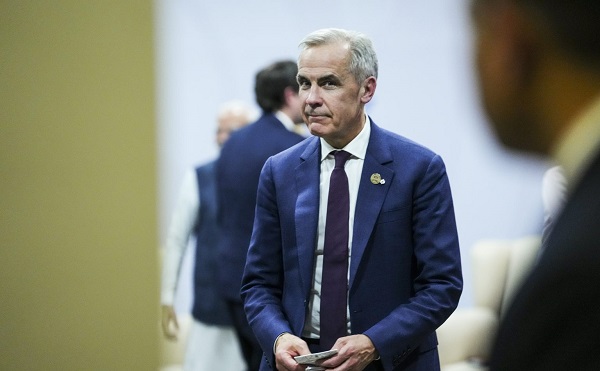
 Business7 hours ago
Business7 hours agoFederal major projects list raises questions
-

 Daily Caller1 day ago
Daily Caller1 day agoEXCLUSIVE: Here’s An Inside Look At The UN’s Disastrous Climate Conference
-
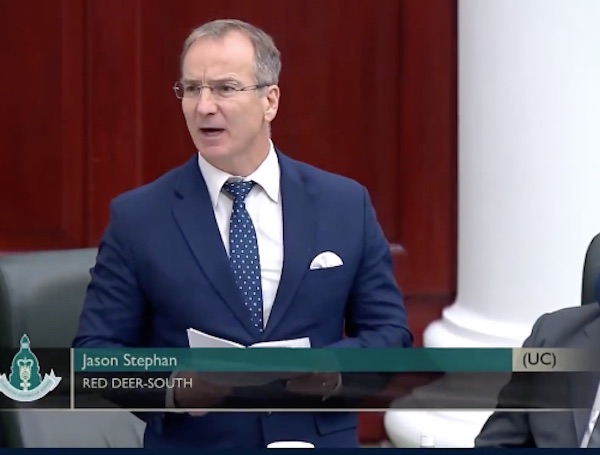
 Alberta2 days ago
Alberta2 days agoRed Deer’s Jason Stephan calls for citizen-led referendum on late-term abortion ban in Alberta
-

 Artificial Intelligence18 hours ago
Artificial Intelligence18 hours agoGoogle denies scanning users’ email and attachments with its AI software







